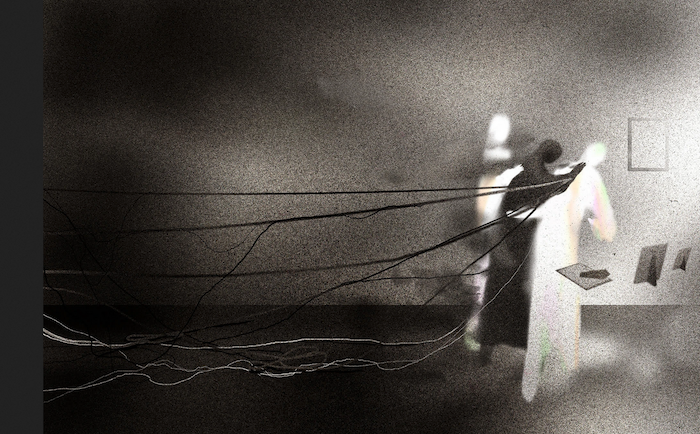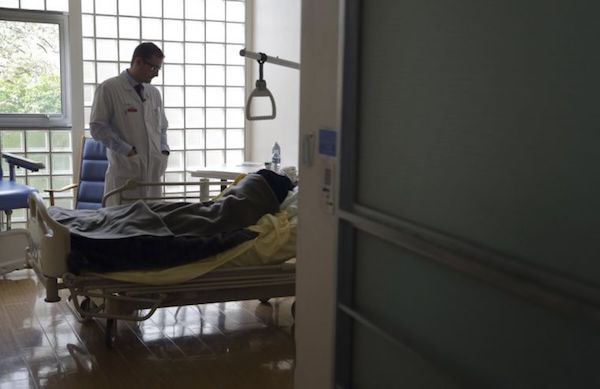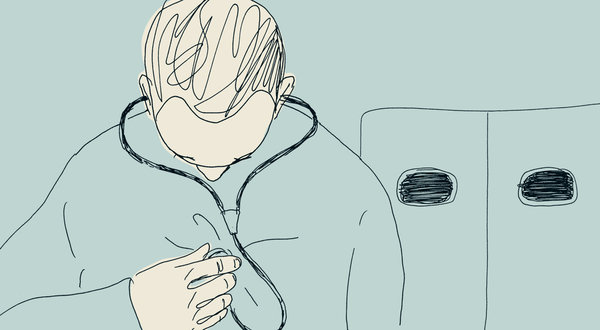Even When Legal, Difficult to Achieve
By Roxanne Nelson, BSN, RN
When Maine passes a law allowing physician-assisted dying (PAD), it will be joining nine other jurisdictions in the United States.
By October, one in five Americans (22%) will have a law that allows terminally ill patients, most of whom have cancer, to choose an end to their life with medical help from a doctor.
However, the practicalities of actually doing so are formidable, and patients who choose this option find there are many obstacles in the way.
First is finding a doctor who will participate. Many doctors have moral objections to PAD, refuse to participate, and will not refer patients.
This sounds familiar to Charles Blanke, MD, professor of medicine at the Knight Cancer Institute at Oregon Health and Science University in Portland, who has been participating in PAD since it was legalized there in 1997.
Blanke says patients have told him that after being turned down by their physician, they also were not given a referral; instead, they were told by their doctor that “they don’t know anyone, and good luck finding someone.”
I believe this is patient abandonment.
Dr Charles Blanke
“I believe it is patient abandonment,” Blanke told Medscape Medical News. “For some patients, it takes them months to find me, so it’s no wonder many are too ill by then to proceed.”
In general, eligible patients say that PAD was not offered to them, Blanke said, but he argues that “it is legal and should be put on the table.”
He emphasized that physicians should never be pressured to participate in PAD, but they should refer patients. “We need to make it more patient friendly and more accessible.”
For years, Oregon was the only state that allowed the practice.
In recent years, however, other states have passed similar laws — Washington in 2008, Montana in 2009, Vermont in 2013, California in 2015, Colorado in 2016, Washington, D.C. in 2017, Hawaii in 2018, and New Jersey just a few weeks ago.
Lack of Training
That some doctors do not want to participate in PAD is understandable; many have moral objections to the whole idea, citing the Hippocratic oath to ‘do no harm.’
But there are signs of a shift toward more acceptance.
For instance, a 2018 Medscape ethics report found that 58% of doctors who responded to the survey said physician-assisted death should be available to the terminally ill, similar to 57% in 2016, and up from 54% in 2014 and 46% in 2010.
However, doctors who are willing to participate find it difficult to do so.
“The law makes no provision for medical training, there is no formal system, and I believe that is one of the major barriers and a shortcoming of the law in every state where it is legal,” said Lonny Shavelson, MD, a California physician based in the San Francisco area who specializes in aid in dying. He founded Bay Area End of Life Options in 2016.
“I agree that sometimes there is a moral objection, and there is sometimes institutional resistance, but most commonly it is lack of training,” he said.
Doctors, as a rule, like to do things they’ve been trained in.
Dr Lonny Shavelson
“Doctors, as a rule, like to do things they’ve been trained in and don’t like to do things they haven’t been trained in,” he added.
He noted that his practice has received more than 800 requests for medical aid in dying from different patients throughout California.
“Every patient who comes to us does so because they can’t find another doctor,” he said. “Everyone thinks it’s because of moral objections or that the patients live in rural communities, but it’s not the case for most of the patients.”
Shavelson told Medscape Medical News that he always calls the patient’s doctor, and most of them are not morally opposed to participating in PAD. “But what they tell me is that they’ve never been trained and that they don’t know anything about it. They don’t know what medications to use, or anything about the paperwork or protocol,” he said.
Barriers To Access
“The great news is that we have 22 years of data in Oregon, and the law is protecting patients,” says Kim Callinan, CEO of Compassion & Choices, the largest national advocacy group for aid in dying.
“But we also have robust data showing that the law is not meeting its intentions and that we have erected too many barriers for many to access it,” she told Medscape Medical News.
Callinan believes that improvements are needed to allow the original intention of the law to take place. “We want to keep the right safeguards in place,” she said. “But we are seeing such small numbers of people using it, and in many cases it’s because they can’t get access.”
Recent reports confirm that the number of patients who have chosen PAD — and who have completed the process — remains small.
For example, data from Oregon show that from 1997–2018, prescriptions have been written for 2217 people, and 1459 patients have died from ingesting the drugs.
In California during a single year (2017), 577 individuals received prescriptions and 374 people died after ingesting the medication.
Shavelson feels the actual demand for PAD is not reflected in the current statistics, and the numbers would probably be much higher if there was more access to physicians.
He argues that a more accurate survey would be to identify how many patients have requested PAD but could not find a physician to help them, he said. Shavelson believes that number would be significantly higher than what has been documented.
Institutional Barriers
In some cases, it is not the physician making the decision but the healthcare system.
A recent survey of 270 California hospitals, conducted 18 months after implementation of the state’s End of Life Option Act, found that 61% of hospitals had a policy forbidding physicians to participate (JAMA Intern Med. 2019;179:985-987).
“We found that of the 164 hospitals in California that opted out, 56% allowed physicians to refer patients to another provider and 29% of hospitals did not provide any guidance on this question,” said lead author Cindy Cain, PhD, assistant professor in the Department of Sociology at the University of Alabama at Birmingham.
“I support the idea that a health system can opt out,” says Peg Sandeen, PhD, MSW, executive director of the Death with Dignity National Center, a nonpartisan, nonprofit organization. “As much as I don’t like it, and think physicians should be free to practice, the health system has that right to do so,” she said.
However, not referring patients is an entirely different issue. “The outright act of refusing to refer a patient puts the physician into an ethical quandary,” she said. “Referral is part of how medicine is practiced, but it is up to the individual physician to make that determination.”
Waiting Times Present Another Barrier
The whole PAD process requires two oral requests with a waiting time of at least 15 days between them, and also a written request using the statutory form included in the state’s aid-in-dying law.
There are slight variations among states (eg, Washington, DC also requires two witnesses). Many states also require a second waiting period, in which the physician must wait 48 hours from the time of receiving the written request to write the prescription.
Callinan believes that the waiting periods, as well as the need for two doctors to confirm eligibility, are redundant in some cases. “The eligibility is that a patient has 6 months or less to live, and 2 doctors have to certify that,” she said.
“But if someone is already enrolled in hospice, as many are, it has already been determined that they meet the 6-month criteria and that the decision has been made to forgo treatment. In this case, they should only need one doctor to authorize it,” she argues.
A new law in Oregon may cut some of the waiting time, as it allows physicians to make exceptions to the waiting periods if the patient is likely to die before completing them.
“Oregon law has not evolved since it was written 20 years ago,” said Blanke. “This new bill will eliminate the waiting period for those who are imminently terminal. It won’t affect very many people, but it will help a few get quicker access.”
Shavelson praised the new Oregon law. “I think the 15-day waiting period is obscene because it’s not 15 days,” he said, explaining that it may be more like 3 or 4 months, as patients have to find a doctor and then may have to wait weeks for an appointment.
“The idea was that it was supposed to be a period of contemplation, but many patients have been contemplating since they got their diagnosis,” Shavelson pointed out. “They didn’t start thinking about it when they first made their request — they have been thinking about this for a long time.”
Patients in this waiting period may be dying or losing the mental and/or physical ability required for self-administration of the drugs, he explained. In his own clinical practice, about 30% of patients die during the 15-day waiting period, he estimates.
This is a similar proportion to that found in recent study from Kaiser Permanente Southern California, where one third of patients became too sick or died before the process was completed (JAMA Intern Med. 2018;178:417-421).
Accessing and Taking the Drugs
Even for patients who do manage to get through the bureaucracy, there are challenges in the practical steps of actually obtaining the drugs. A physician can only write the prescription and it is up to the patient to procure the drugs.
When states began to first legalize PAD, the drugs of choice were oral pentobarbital and secobarbital. However, as of 2015, both of these drugs have been largely unavailable, as previously reported by Medscape Medical News.
Through trial and error, a group of physicians eventually developed a drug regimen (DDMP2), which contains diazepam 1 g, digoxin 50 mg, morphine 15 g, and propranolol 2 g. It is more complicated than the barbiturates but has been found effective.
Shavelson explained that an updated version known as D-DMA (no propranolol and amitriptyline 8 g added), which is both faster and more reliable than all other protocols, is in the process of replacing DDMP2.
Both formulations are compounded by a pharmacist and available as a powder, which then must be mixed with 4 oz of apple juice and taken as a liquid/suspension.
Shavelson noted that physicians may not know where a patient can fill the prescription.
“It’s not something that can be filled at the local CVS or Walgreens,” he said. “A regular pharmacy doesn’t have the ingredients on hand, and for the DDMP2 combination, it has to be compounded.”
In California, two pharmacists currently fill about two thirds of the prescriptions. “Pharmacists need training as well,” Shavelson contends. “They are an integral part of this process.”
Even the last step in the whole process, the actual ingestion of the drugs, can be difficult for some patients.;
State law requires that the lethal dose be self-ingested via the digestive tract (orally or through an nasogastric (NG) or gastrostomy tube). The restriction that the drugs must be self-administered was to help ensure no one could harm a patient against his or her will.
However, many terminally ill patients are so sick they can’t physically mix the solutions, pick up and take the medicine, or swallow the drugs. Blanke estimates that around 10% of the patients he has evaluated have swallowing issues, and they fear that they will be unable to swallow the medications when they are ready to die.
To get around these practical difficulties, a proposed bill in Oregon sought to allow patients to self-administer intravenous drugs.
“There are many people who cannot swallow or administer through an NG tube, so just pushing the button on a pump syringe would allow them to take the medication,” said Blanke. “The IV could be put in right before they used it.”
Putting in an IV is easier than an NG tube, he explained, and much less invasive than a gastrostomy tube. “There’s really no difference between them, as far as putting medication in,” Blanke said. Both require some intervention and hold the same risk that someone else can administer the drugs.
Although the bill passed through the Oregon House of Representatives, it stalled in the Senate and has not moved forward. Some opponents of the bill feared that it would move Oregon closer to allowing euthanasia, while others cited the high cost of pump syringes.
Blanke believes that much of the opposition was really directed at the concept of assisted dying. “The arguments were with Death with Dignity,” he said. “Not the idea of making changes in the law or the use of an IV.”
The practical difficulties of PAD in the United States contrast with a much simpler process in Canada. Since 2016, Canada has legalized medical assistance in dying, which allows for both physician-assisted euthanasia and self-ingestion of a lethal dose. Patients have overwhelmingly selected physician-assisted euthanasia, where the lethal dose is administered intravenously by a clinician. According to Health Canada, of the nearly 7000 Canadians who have chosen to end their lives since the law went into effect, only six people have opted to self-administer drugs.
Physician Education and Training Needed
The biggest barrier — and the most imperative need — is physician education and training in PAD, argues Shavelson.
“Traditionally, teaching happens at large institutions, medical schools, universities, academics — but they won’t touch this,” said Shavelson. “They don’t want their reputation so-called ‘sullied,’ and are frightened that their reputation will take a hit. I don’t think that’s true, and I think people would feel that it’s a good thing to have medical centers more involved in this.”
Academia has fallen down on their responsibility, he contends. “This is a legal medical procedure and there is not one medical institution in my state [California] that is doing formal training on this. It’s not part of any conferences or any continuing medical education.”
As an example, the University of California, San Francisco, forbids palliative care residents and fellows from participating in aid-in-dying practices. The end result is that there are palliative care fellows coming out of training who have no experience in this area.
“Their patients will be asking about it, since palliative care doctors get asked about it more than any other specialty except for oncology,” said Shavelson. “So we will have palliative care and hospice doctors who have no training in it, and that’s absurd. This is part of the realm of what they are going to have to deal with in their practice, and institutions have forbidden it.”
However, next year the first conference for clinicians on medical aid in dying will be held in Berkeley, California, and will really delve into the nuts and bolts of practicalities, Shavelson explained. “The topic has come up at conferences, and there have been other gatherings to discuss it, but the focus has been on policy and ethics.”
This new meeting, called the National Clinicians Conference on Medical Aid in Dying, will provide an opportunity for clinicians to learn about bedside practices and share information.
“We need this clinical conference,” Shavelson added. “We are going to make education happen.”
Complete Article ↪HERE↩!







